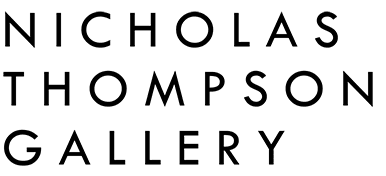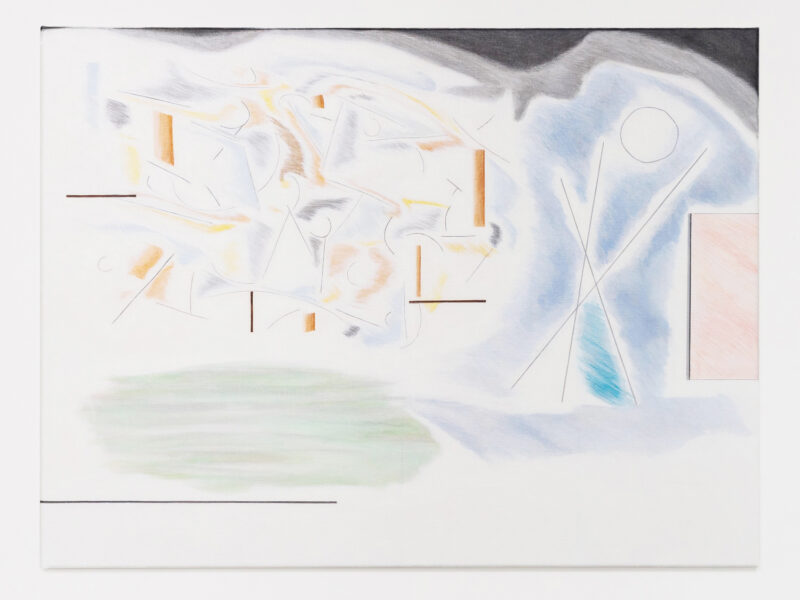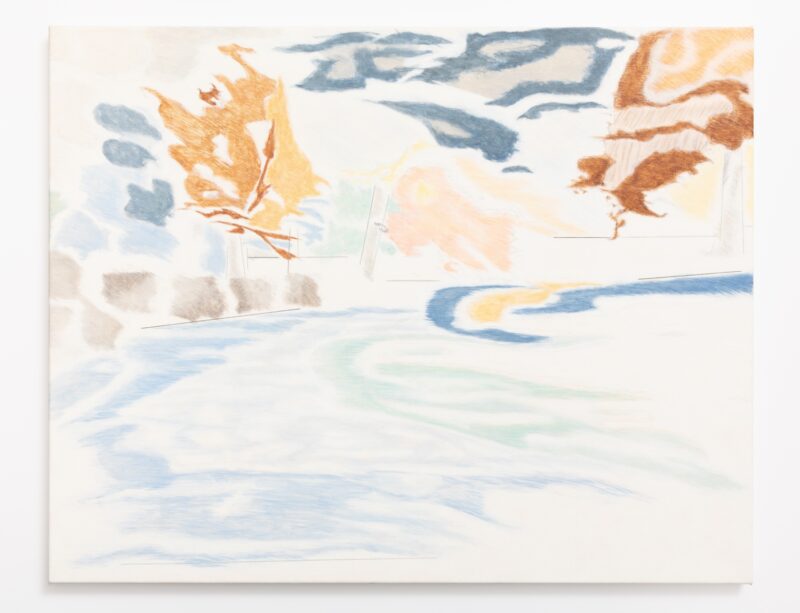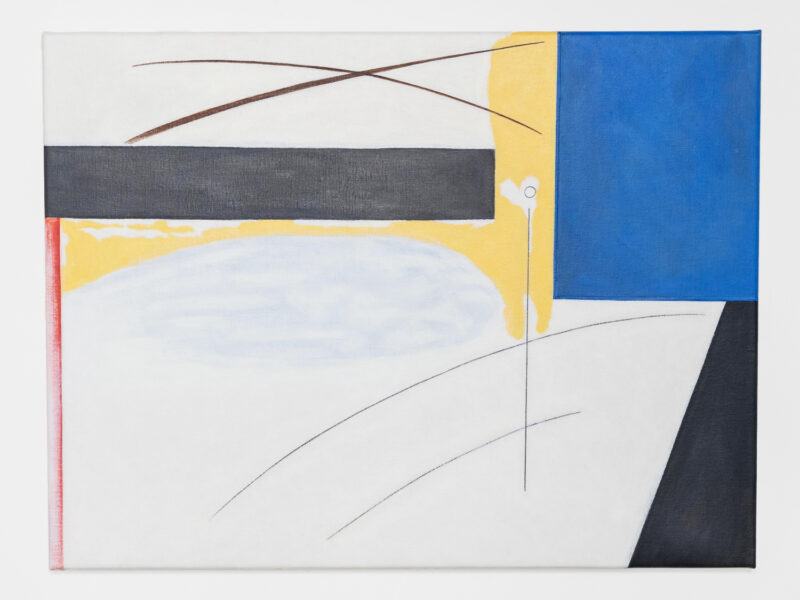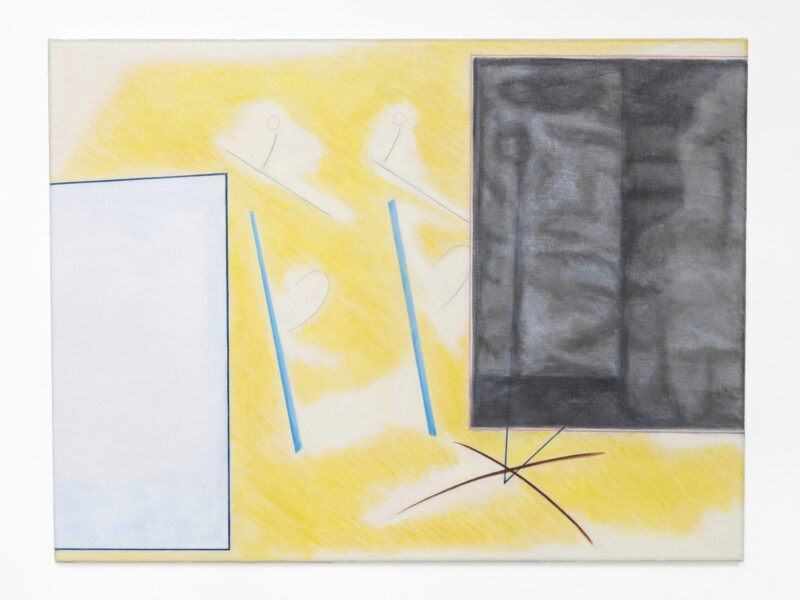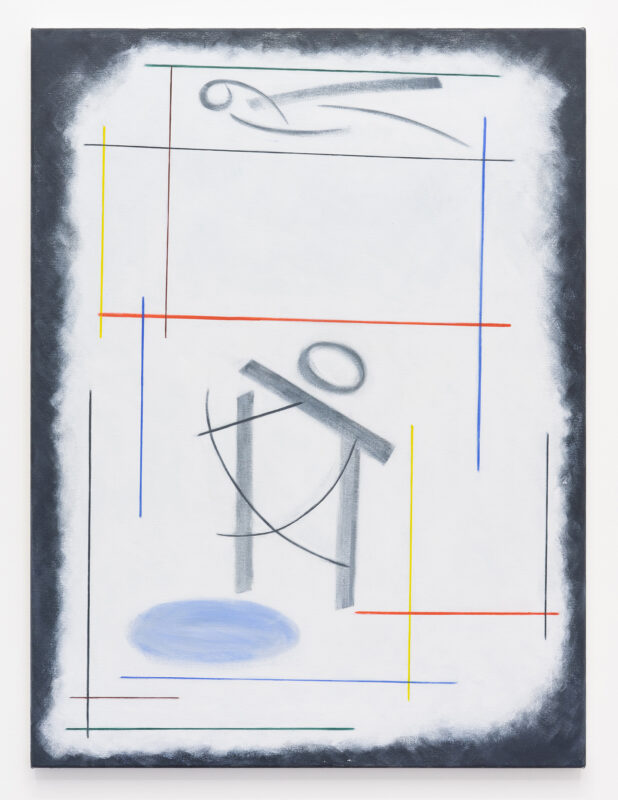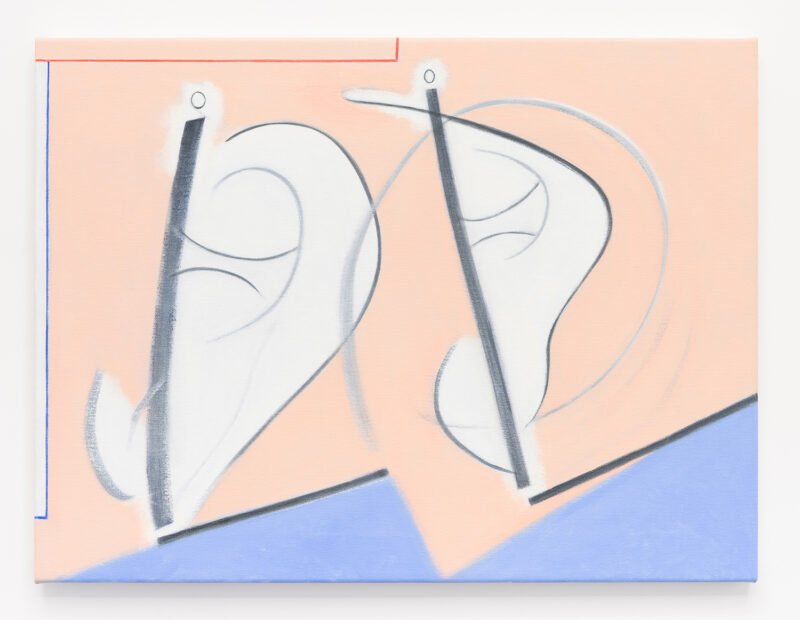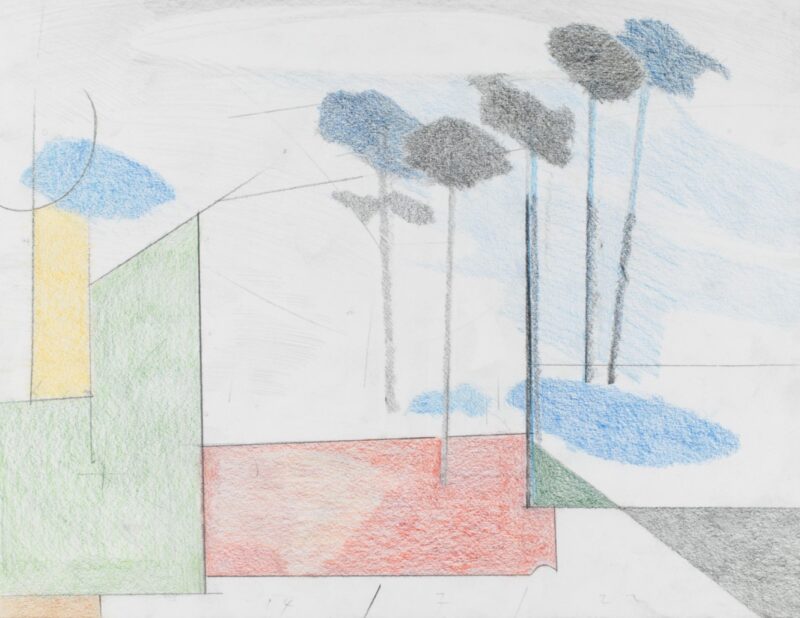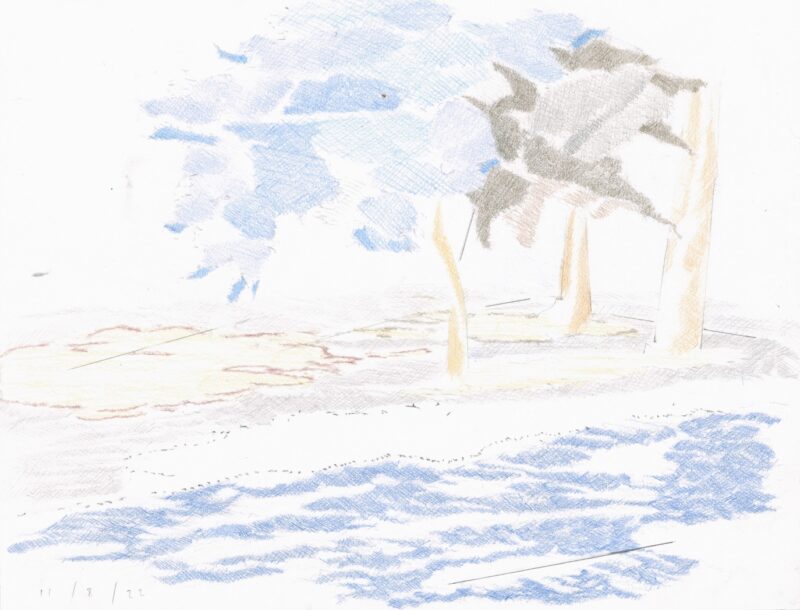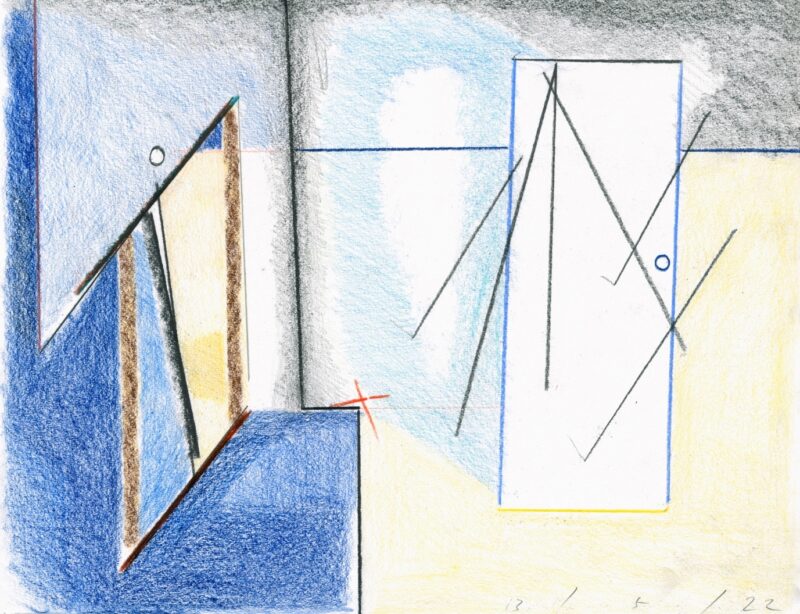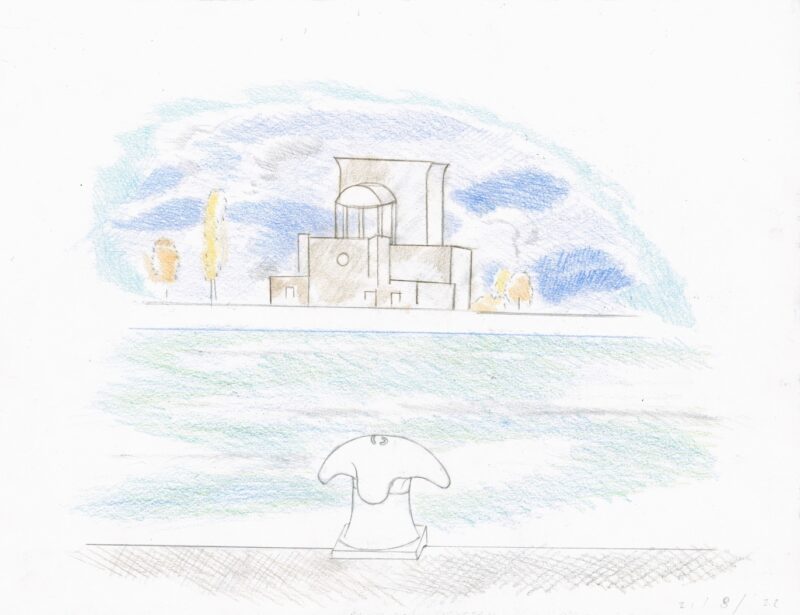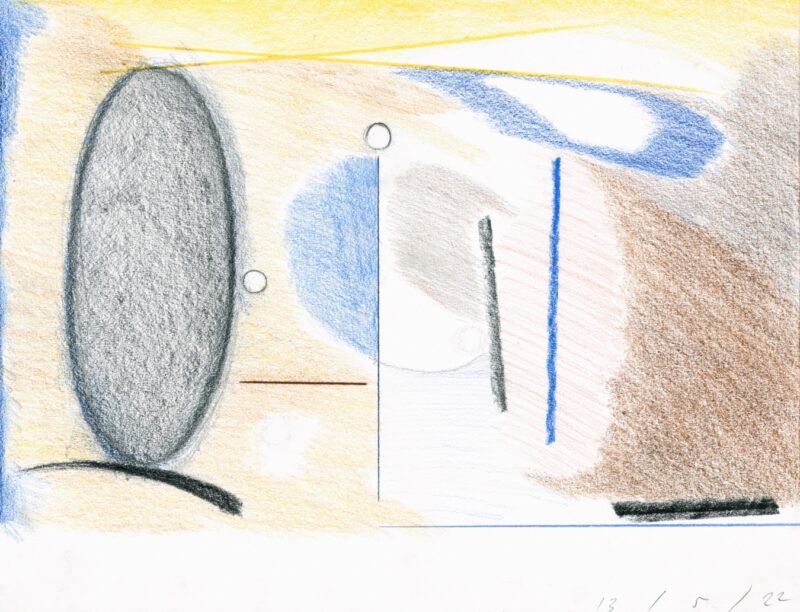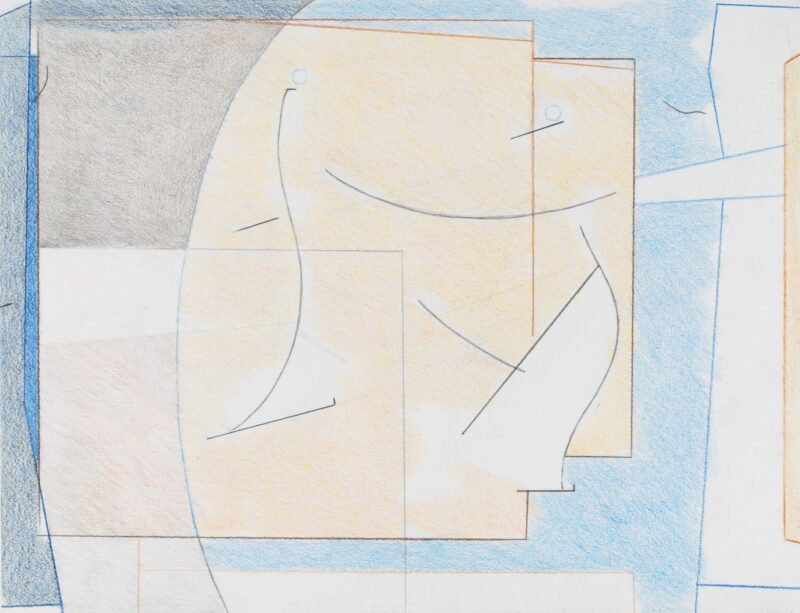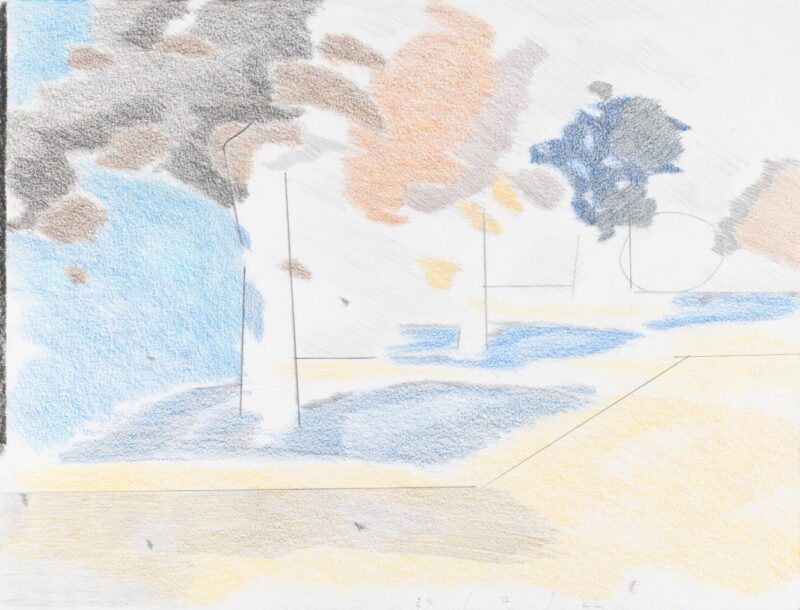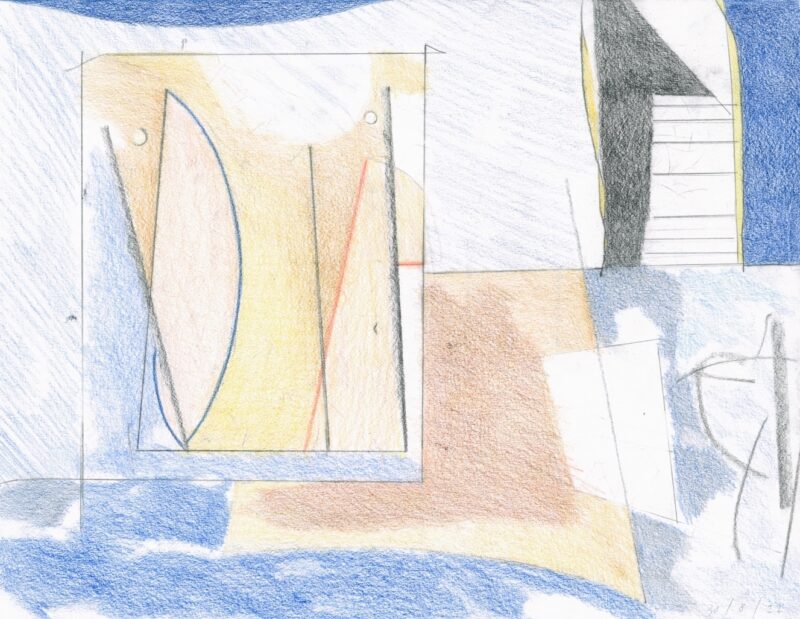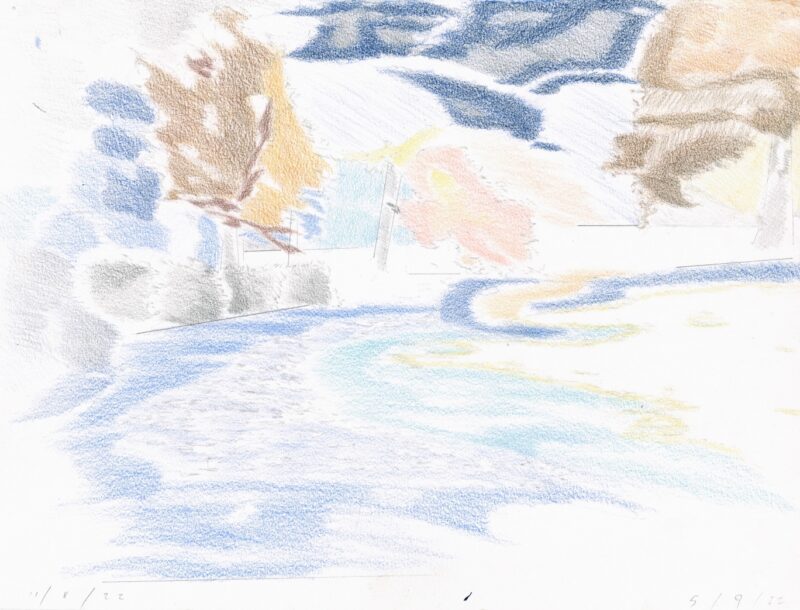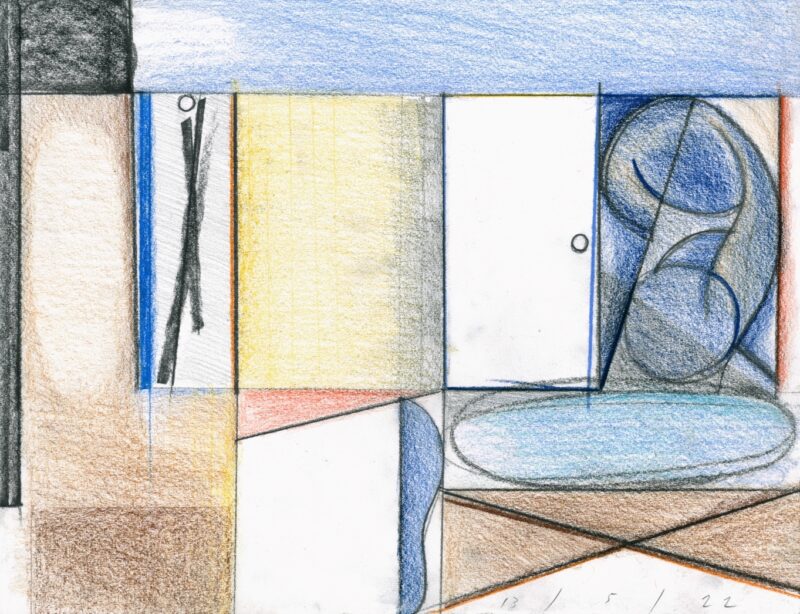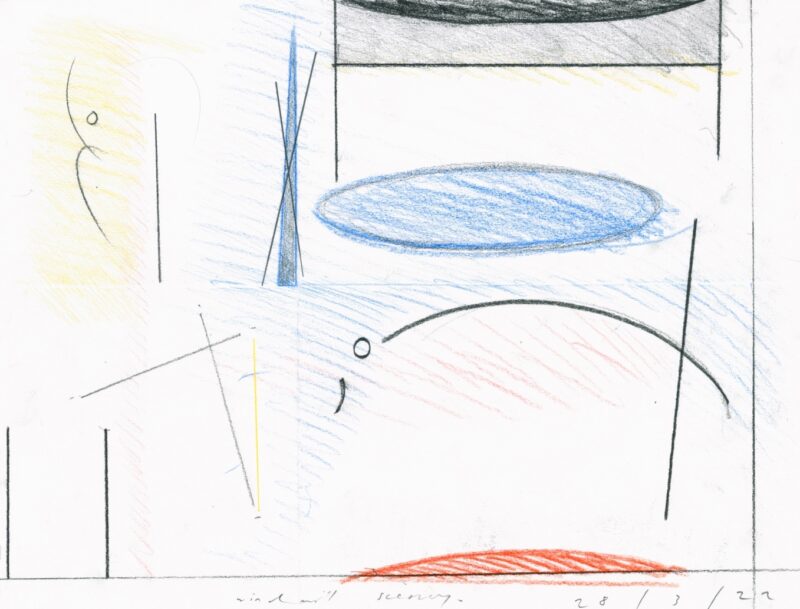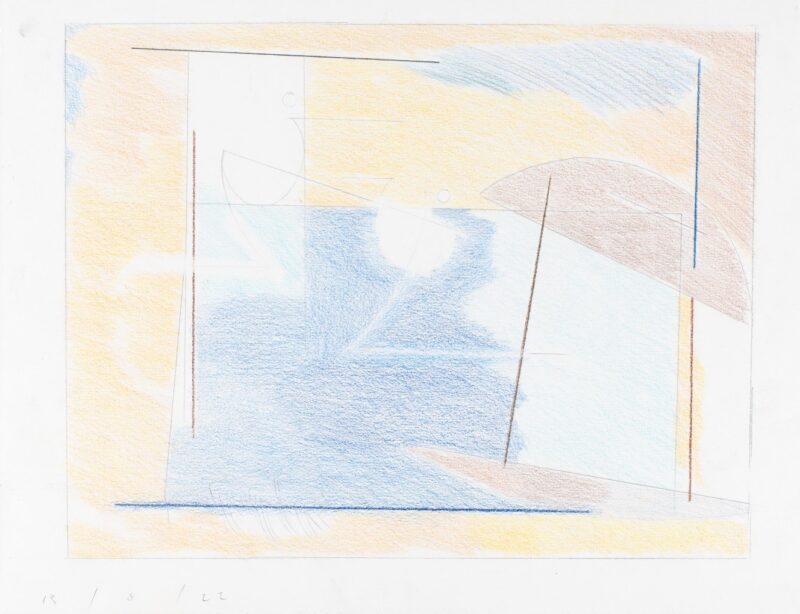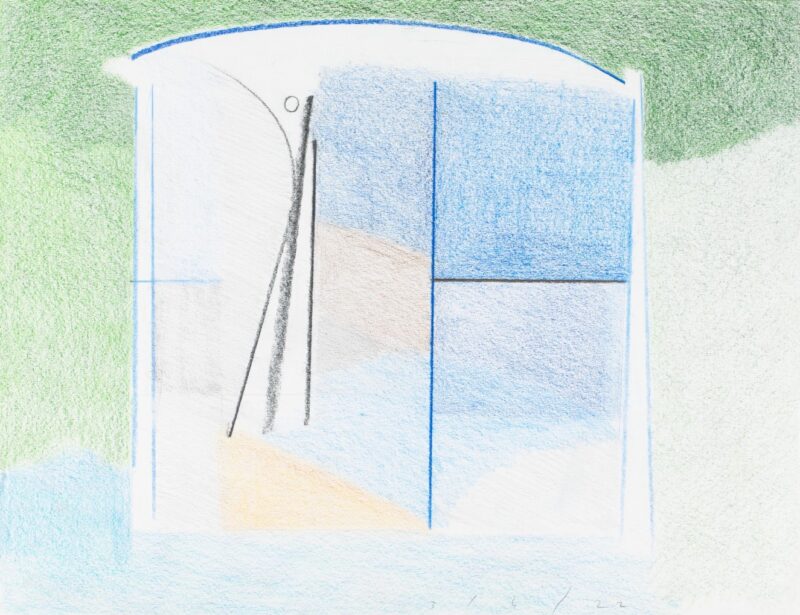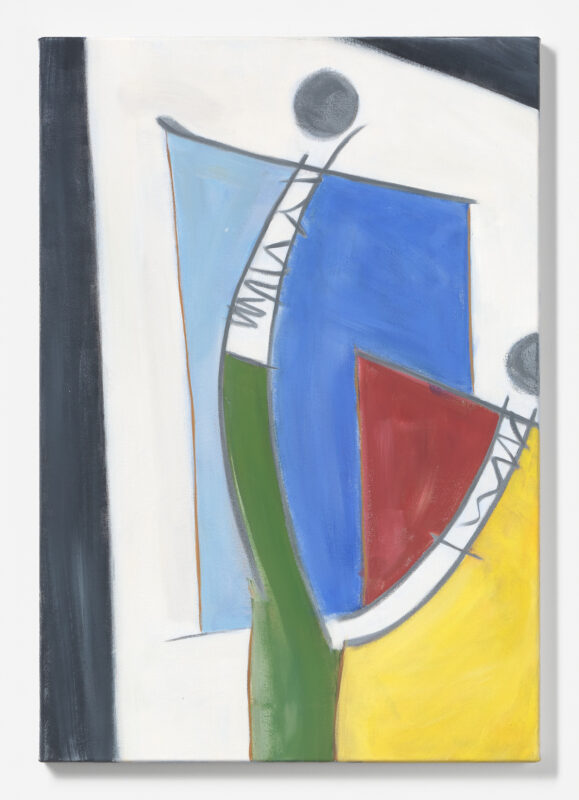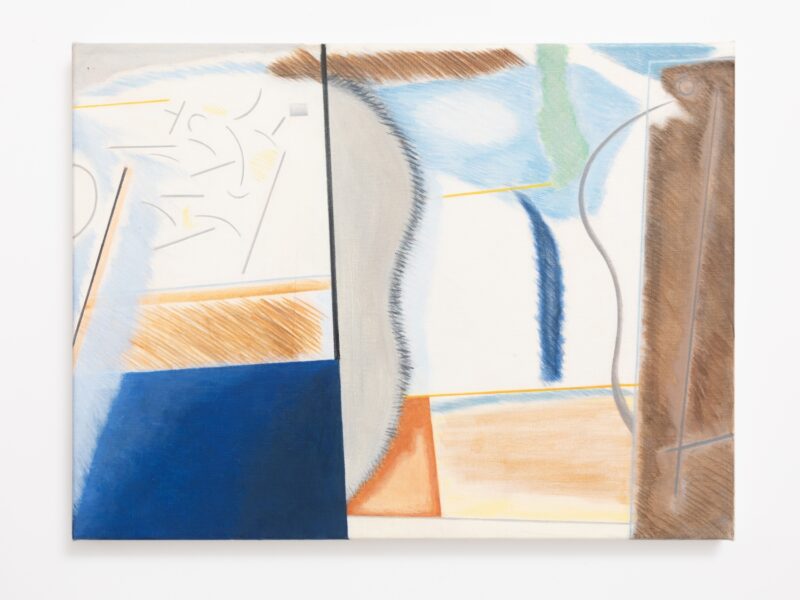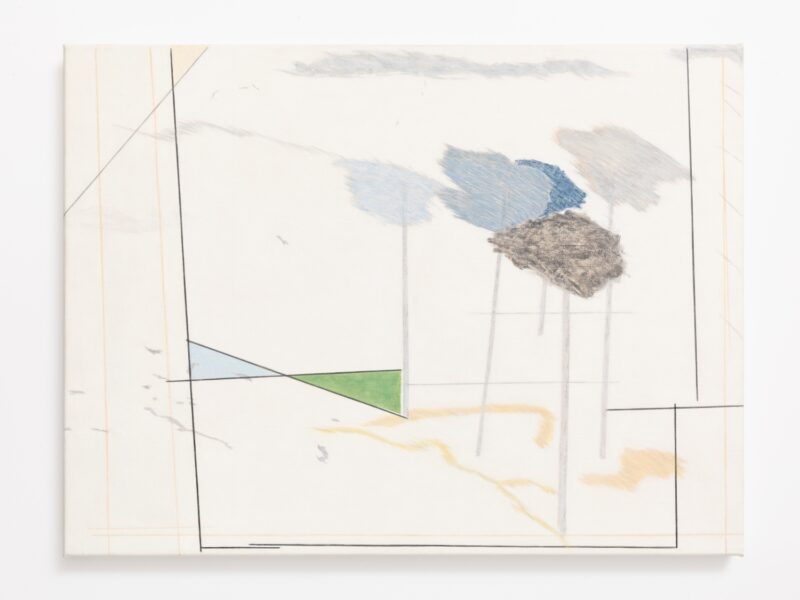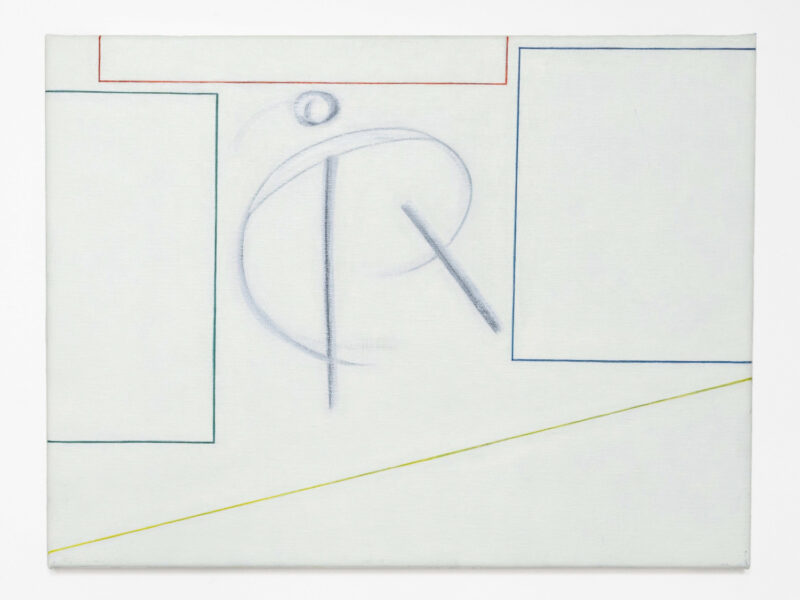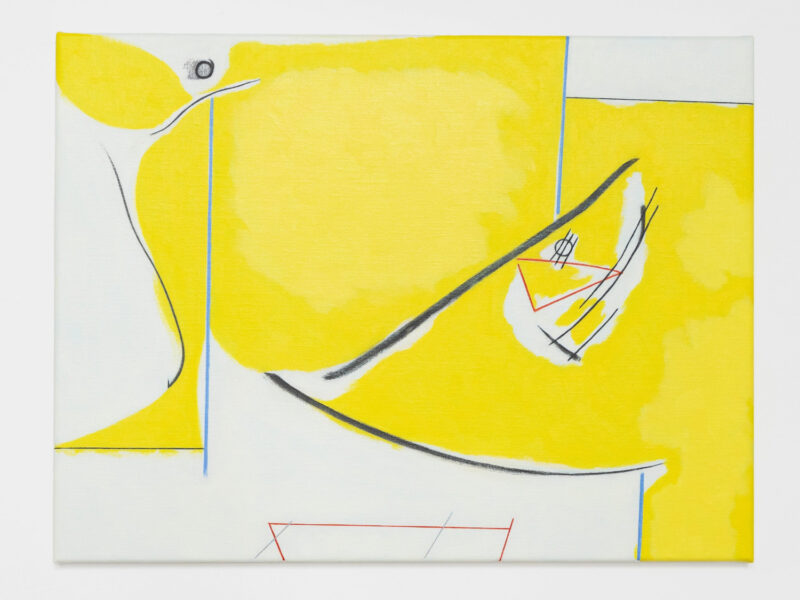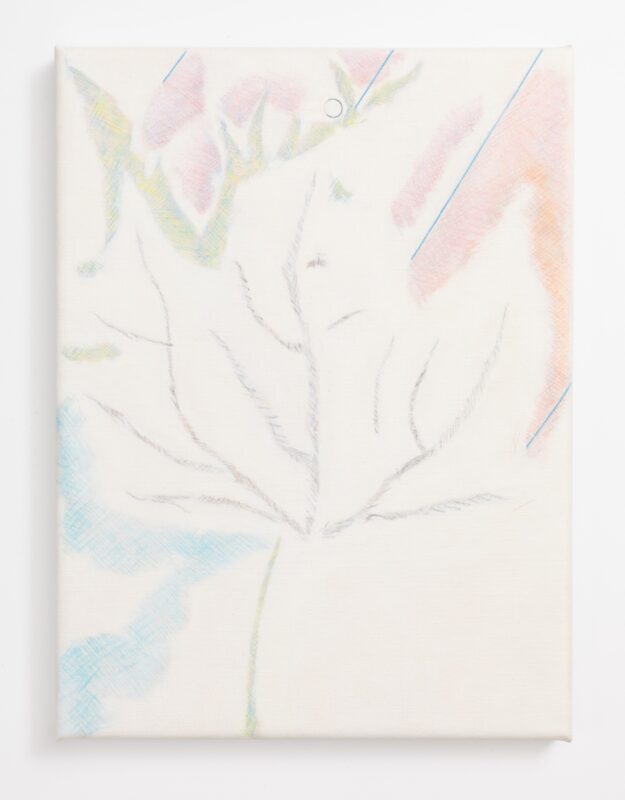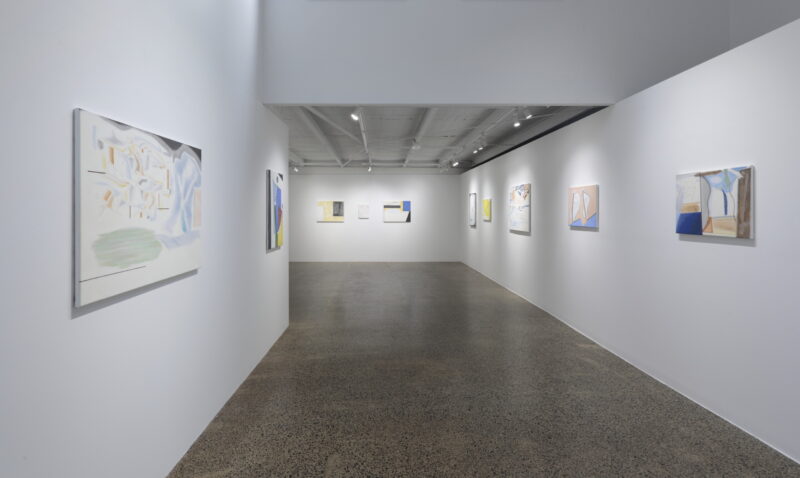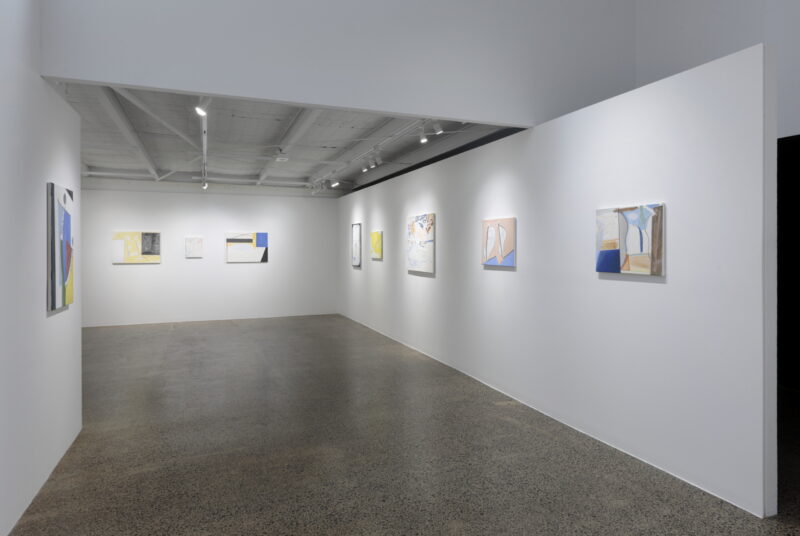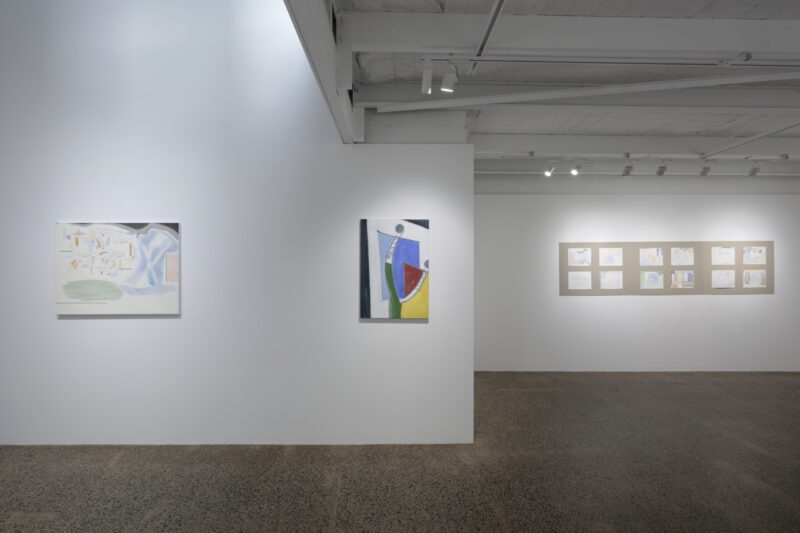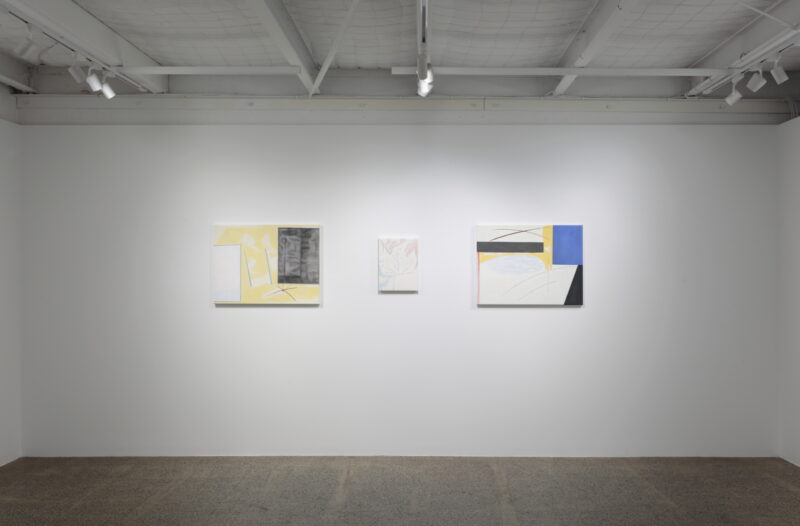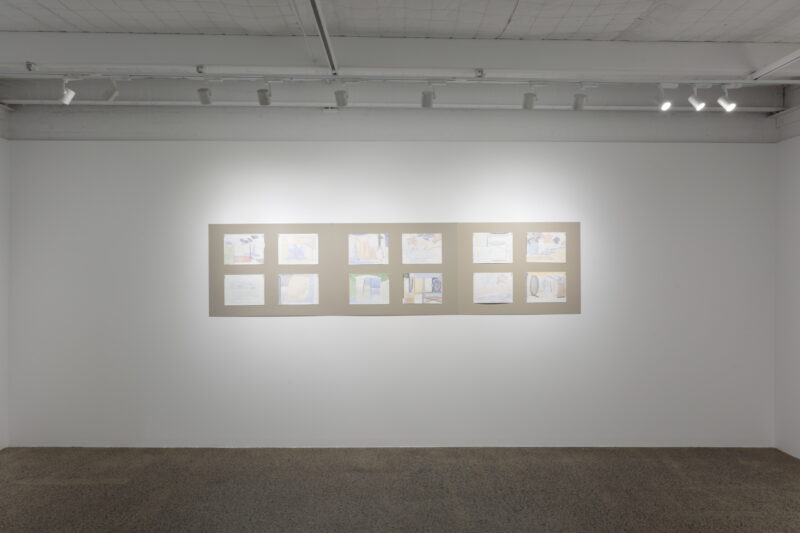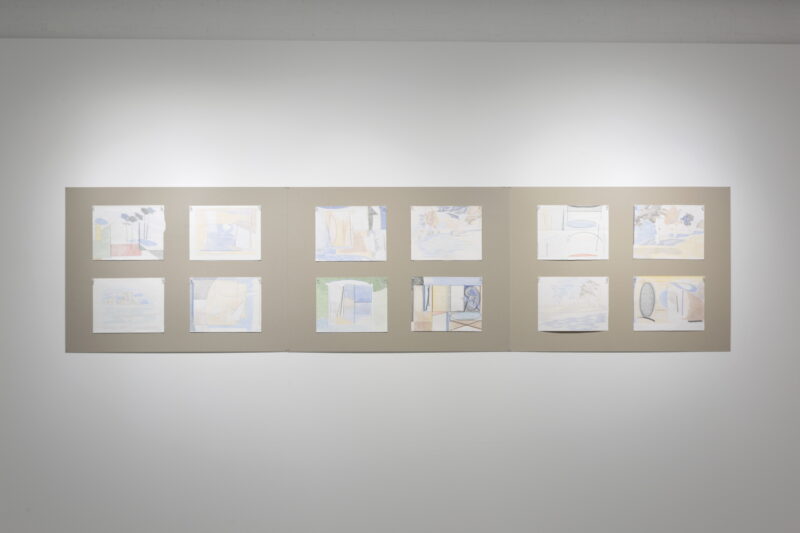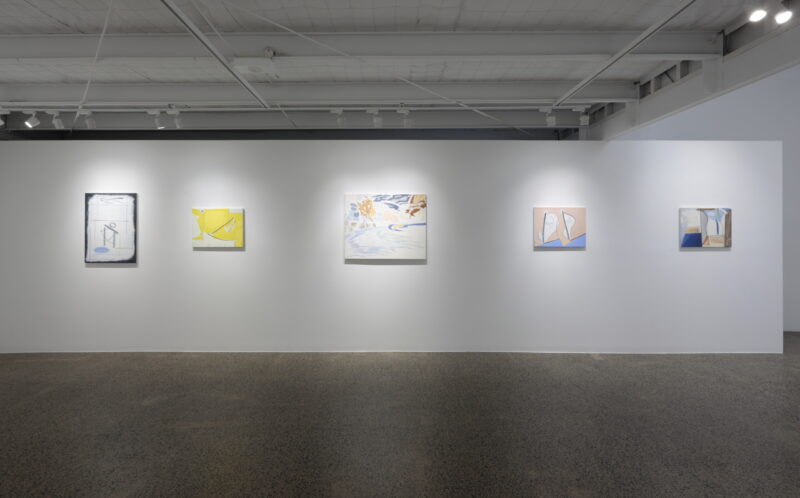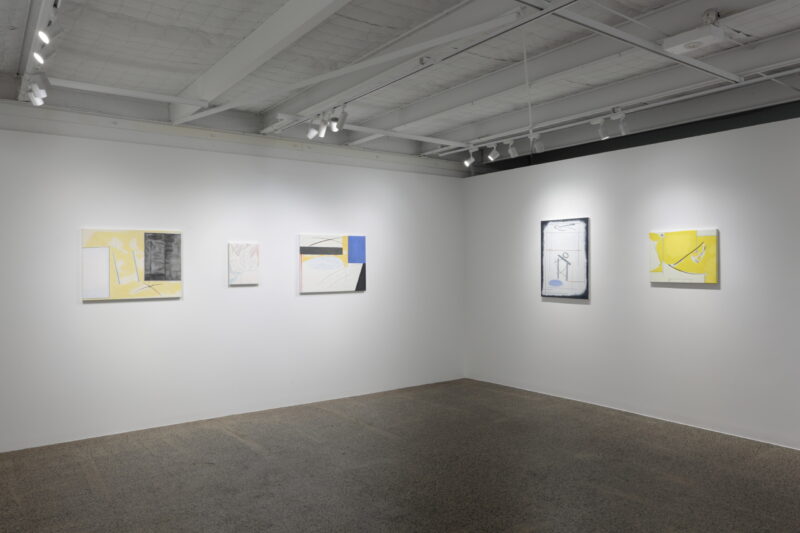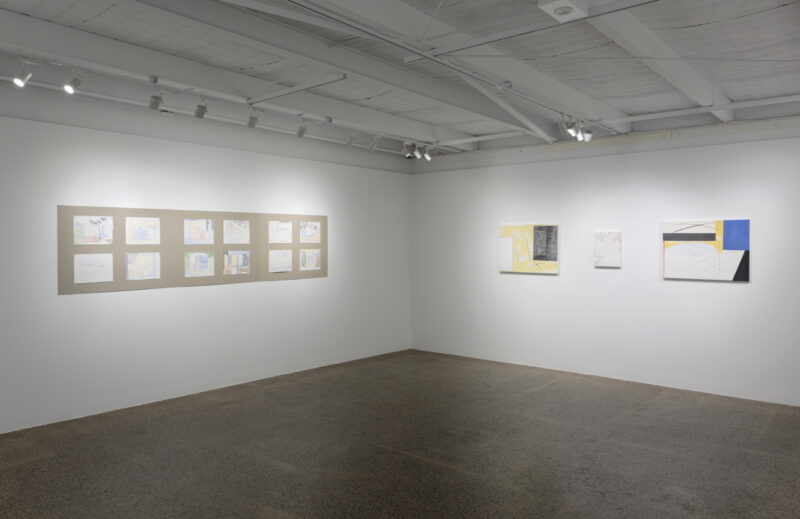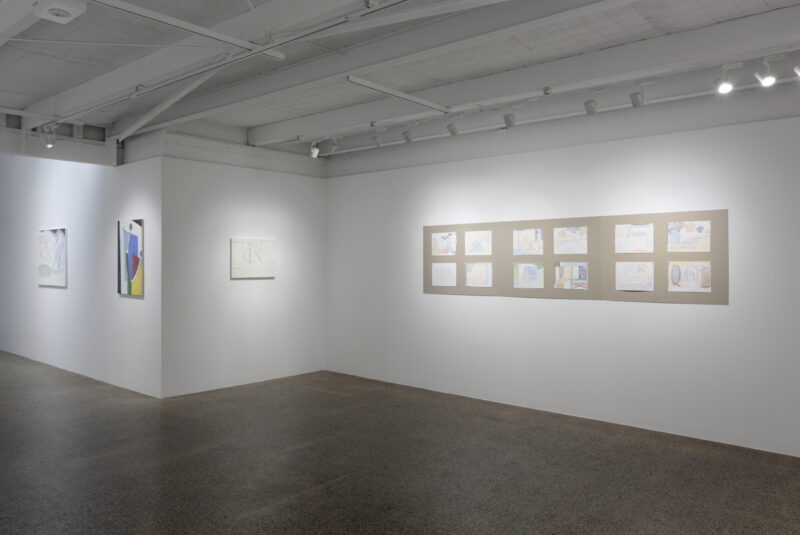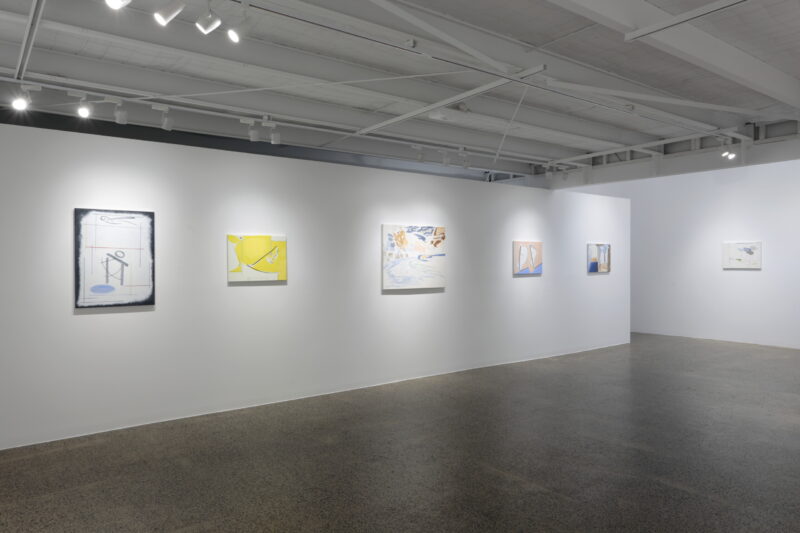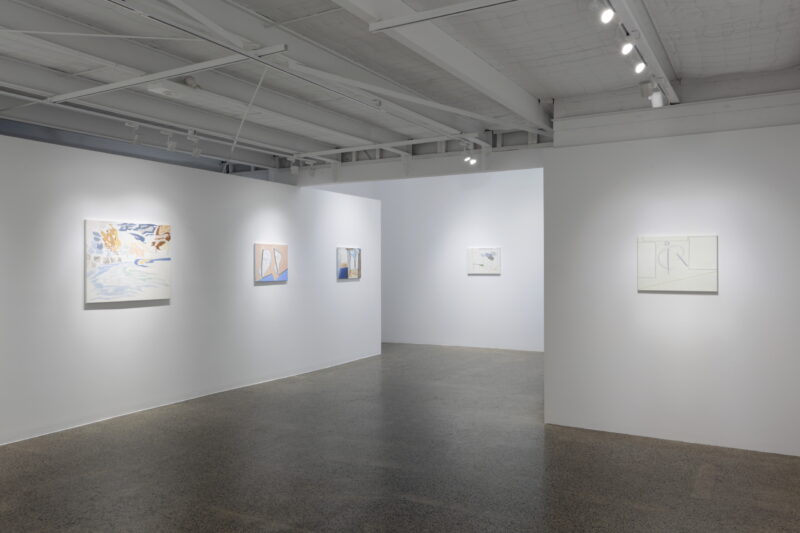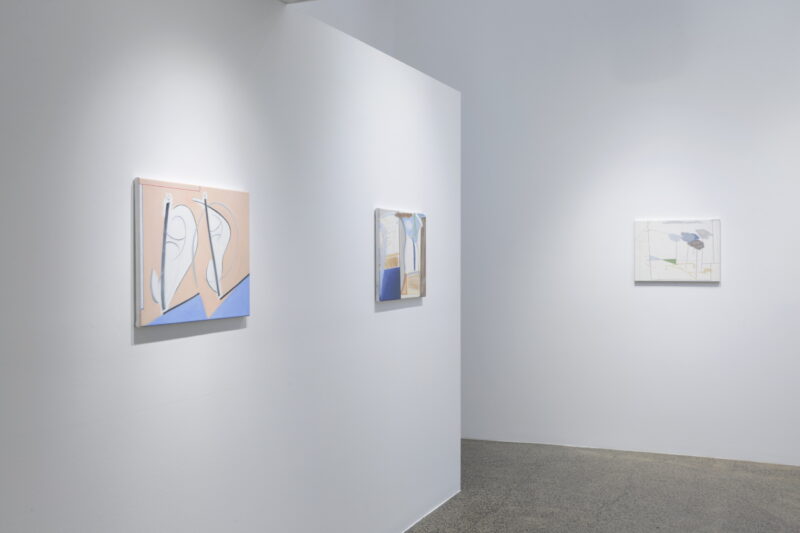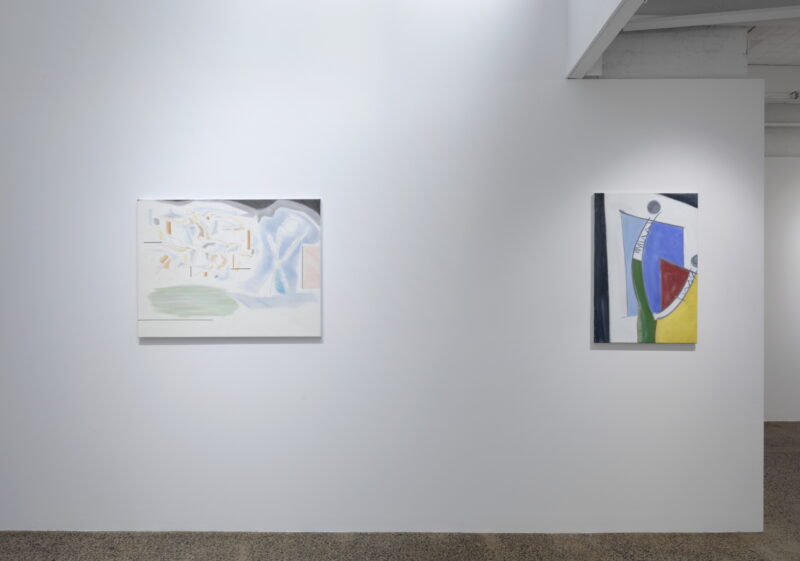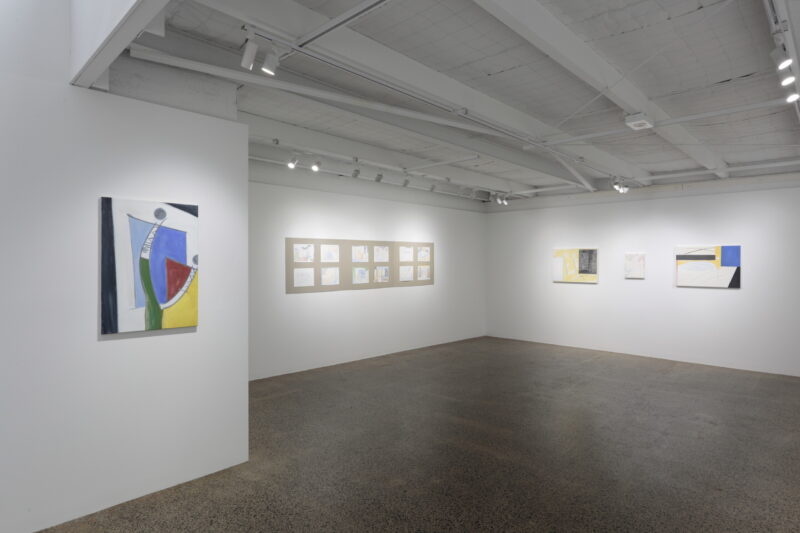MARTIN GEORGE
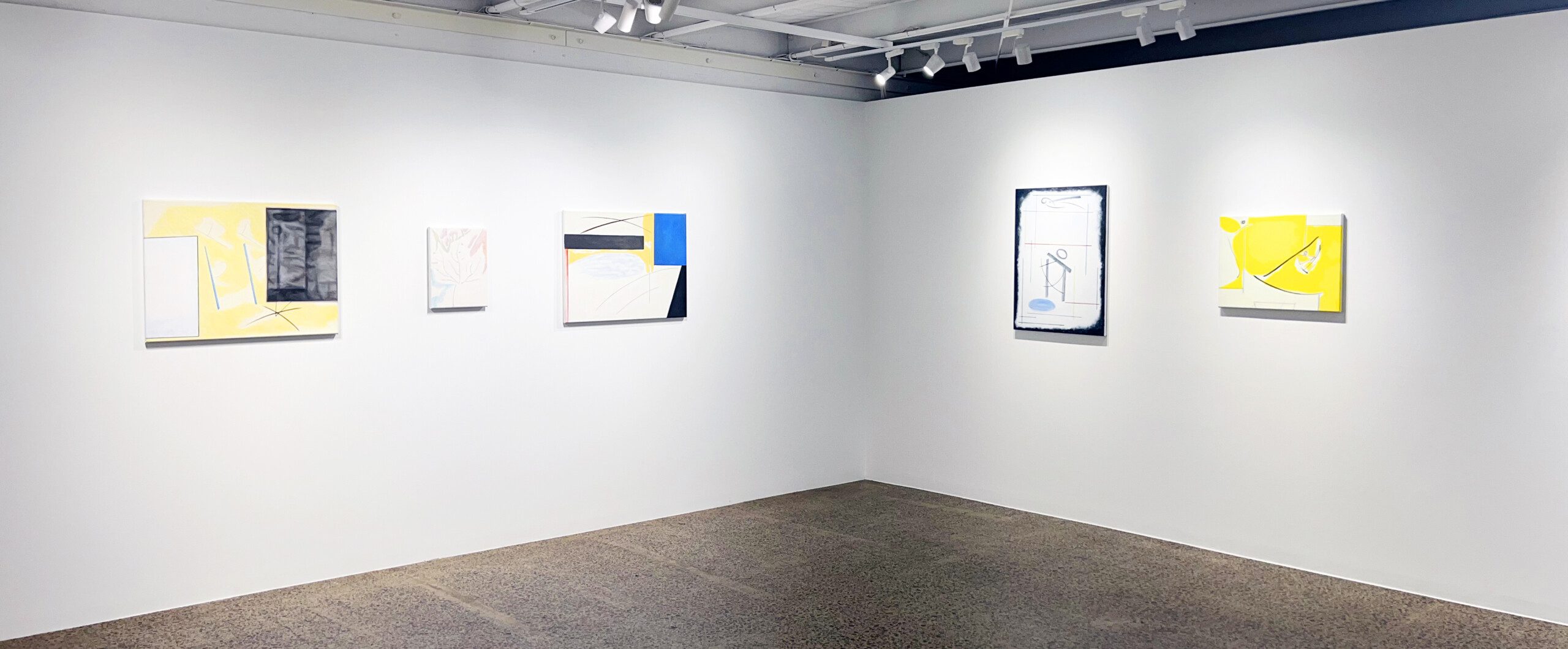
BIOGRAPHY
Martin George has held solo exhibitions since 2016 and has been included in group exhibitions in Melbourne, Sydney, Baltimore, Newburgh, Lisbon and Rotterdam since 2015. He has a Bachelor of Arts (Honours) from RMIT (2016) and was awarded a Summer Residency at the Otis College of Art and Design in Los Angeles (2017). George has been a finalist in the Bendigo Gallery Arthur Guy Memorial Prize (2017), the Redland Art Awards (2018), the Churchie Emerging at Prize at the Institute of Modern Art, Brisbane (2020) and the Bayside Acquisitive Art Prize (2019 and 2021).
ARTIST CV
DOWNLOAD PDF
WORKS
PAST EXHIBITIONS
MEASURING THE WIND
25 OCTOBER TO 11 NOVEMBER 2023
Sinuous geometry
Martin George’s practice hails from drawing. One of his early sketchbooks is small and handbound, with a black linen cover, which due to water damage has crinkled and warped. On its front, a white dot bleaches the fabric like a bleeding star in the night sky. Inside the book are exquisite sketches of figures and faces and everyday still life scenes. There are also patterns, architectures and abstractions that feel mysteriously anchored to something in the real world, although the reference is not always clear.
One page I photographed is drawn in two shades of biro, black and blue, and shows a chair from an odd angle, jutted up against a desk with a tiny rubbish bin peeking out in the background. The shapes of the scene merge to become something alien and elegant, the shadow of the chair skeletal, like the butterfly of a pelvis bone, cross-hatched onto the floor. At the top of the page, a little scribble—the kind you make to get a pen flowing—flies off like a whimsical bird.
In 2003 French philosopher and art historian Georges Didi-Huberman wrote an essay about an invisible force in early Renaissance painting—the wind.[i] While unseeable, this “imaginary breeze” ruffled the hair and clothing of the pictures’ goddesses, gods, human and heavenly beings. This wind came from outside the image but affected it internally, undoing its stillness; an energetic body itself, the wind hung between the human bodies like drapery, an “accessory in motion” that altered everything it touched, sending a “quiver” through the picture, space and time.
In Measuring the Wind, George’s paintings and drawings flex between structured and organic realities. Pale primaries, whites and multiple blues create buoyancy in his pictures, while paint is applied in a way that emulates soft pastels or other drawing materials. Pictorially, symbolic elements that reference human and non-human entities are used in various iterations. These elements are specific assemblages made of line and shape that the artist has developed and defined over time, and now appear repeatedly in his work.
One symbolic arrangement comprises a broken sphere, two diagonal lines and a hovering unfilled circle. Together, this element, which looks a bit like a flat angel mid-flight, is understood by George as a figure or a head (“figure/head”). Other repeated elements, as he describes in couplings, include “clouds/trees,” “storm/abstraction,” “lake/portal” and “lines/barriers.” We see, these elements are not entirely fixed; they invite ambiguity as they shift between their two descriptors. They also change depending on which other elements they are combined with in a picture.
The negative space between the objects is also active; like in Didi-Huberman’s essay, it is an imaginary breeze. It is an accessory of motion that keeps everything flowing, so the elements can riff off one another but not really touch; autonomous subjects in intimate interaction. While “figure/head” might agitate the centre, “line/barriers” flanks the sides, and in combination they are lively. George’s interest in lyrical Modernism shows here—his pictures could be contemporaries to Klee’s dreamscapes, Kandinsky’s cosmoses or Mondrian’s harder abstractions—all of which are influences—with organic forms cavorting with geometries, sounding off against one another across the canvas and across the room.
In George’s studio, there is a tiny book on the paintings of the 1970s and 80s Italian trans-avantgarde.[ii] In one of the works by Nicola de Maria from 1978, a cobalt blue field is aerated with the many gestural brush marks it takes to fill a large space. The blue paint is slightly transparent and textured from being stretched across the surface by a fast-working brush. In the top left corner, a grouping of small, red, hard-edged shapes look like they are trying to escape. Grappling with the tensions between the organic and the geometric, stasis and action, containment and freedom, Measuring the Wind employs George’s unique visual language to experiment with his own personal and changeable laws of cosmic arrangement.
In the book on Italian painters, I notice part of a line that says, “the sinuous geometry of the eclipse and the spiral.” Out of context, it’s endless.
Written by Laura Skerlj
[i] Georges Didi-Huberman, “The Imaginary Breeze: Remarks on the Air of the Quattrocento,” Journal of Visual Culture 2, no. 3 (January 1, 2003): 275–89. doi:10.1177/1470412903002003001.
[ii] Achille Bonito Oliva, Italian Trans Avantgarde (Milano: Giancarlo Politi, 1990).
NEWS
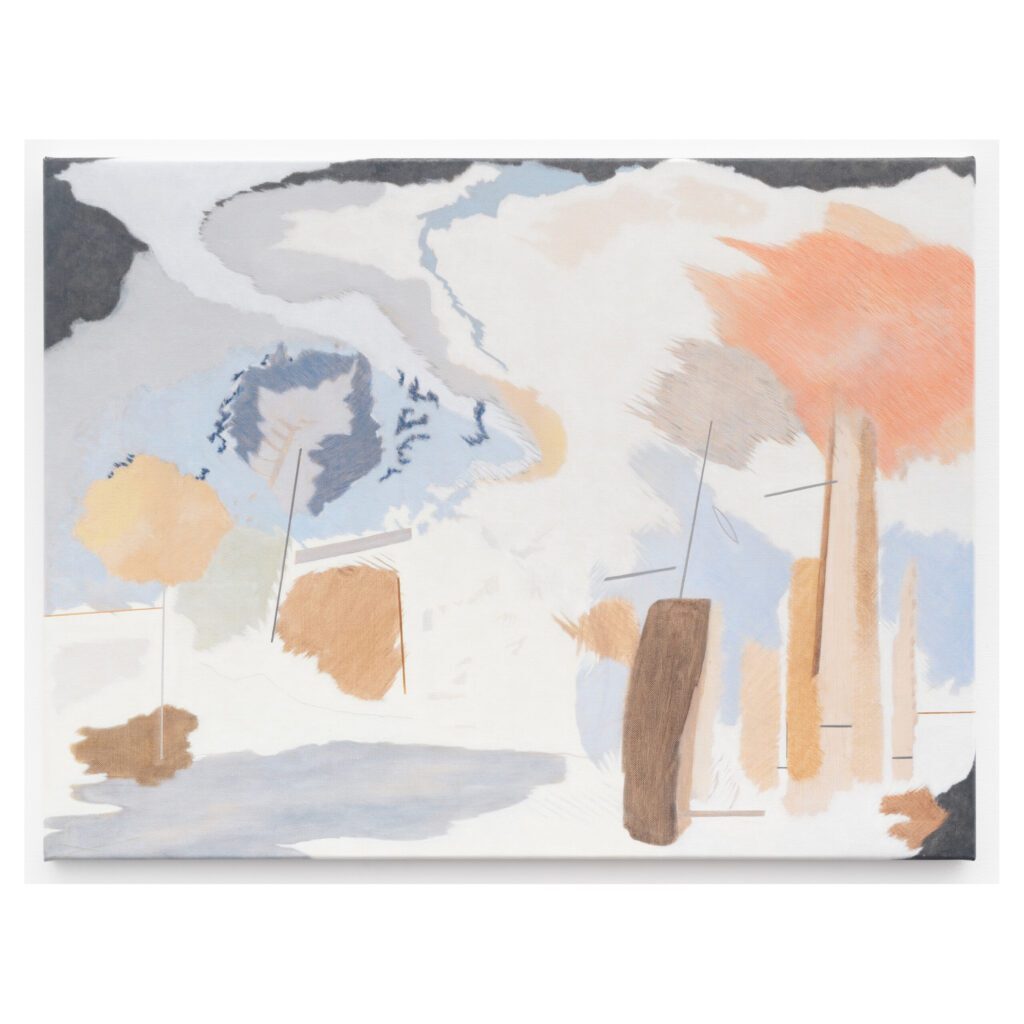
MARTIN GEORGE FINALIST IN 2024 BAYSIDE PAINTING PRIZE
Martin George is a finalist in the 2024 Bayside Painting Prize . Established in 2015, the Bayside Painting Prize is one of the most generous non-acquisitive painting prizes in the country. The finalist exhibition brings together a broad range of artists, both established and lesser known, whose varied approaches to the painted medium conveys the…
